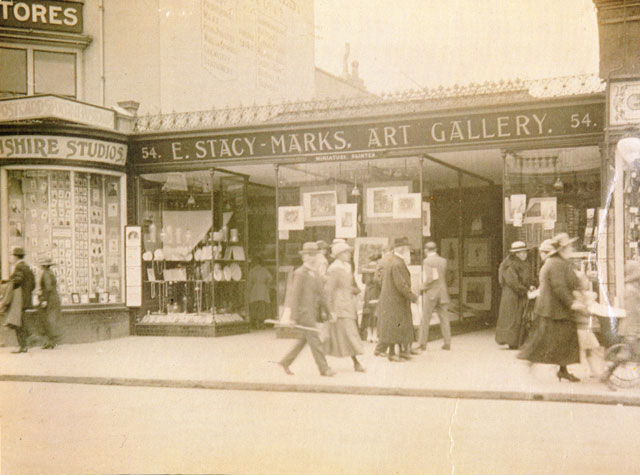B. J van Hove
Bartholomeus Johannes van Hove was born in The Hague on October 28th, 1790. As a child he was trained by his father, who was a gilder and frame maker. Afterwards he took up an apprenticeship with Joannes Henricus Albertus Antonius Breckenheijmer (1772–1856), a painter of stage scenery. In 1812 he enrolled at the Koninklijke Academie van Beeldende Kunsten in The Hague. He succeeded Breckenheijmer as resident painter at the Hague Theatre, the Koninklijke Schouwburg, where he became renowned for his beautiful sets, some of which have been preserved (Amsterdam, Theatermuseum). Van Hove also produced easel paintings, chiefly townscapes with ample space for fantasy. One of his best works is the Garden at Gedempte Burgwal 34 in The Hague (1828; The Hague, Gemeentemuseum). This carefully constructed view displays skills learned in the theatre. Later in his career, in tune with general stylistic developments in Dutch art, detailed execution and subtle use of colour gave way to a looser touch and a greyer palette. The Gothic Gate (1841; Enschede, private collection, Edwina van Heek) and View on the Zieken in The Hague illustrate this shift. As well as his townscapes, mainly featuring complex and majestic churches, van Hove also painted church interiors (Church Interior, 1844; Amsterdam, Rijksmuseum).
He was a popular and capable teacher. The best-known of his pupils were Jan Hendrik Weissenbruch and Johannes Bosboom. Bartholomeus van Hove was one of the co-founders and the first chairman of the "Pulchri Studio" artists collective, a group of painters from the Hague who saw a growing discontent among young painters in the region over the inadequate possibilities for training and development. They wanted to give artists the opportunity to work after a model and discuss each others' work in frequently held meetings. Surprisingly, Pulchri Studio came into existence at the moment that the French Barbizon-painters did away with Symbolistic Classicism and were considered overly democratic, fifteen years before Courbet and Manet were refused by the Salon and no less than 25 years before the Parisian Impressionists started to make themselves known. Van Hove passed away in The Hague on November 8th, 1880, one and a half weeks after his ninetieth birthday.

